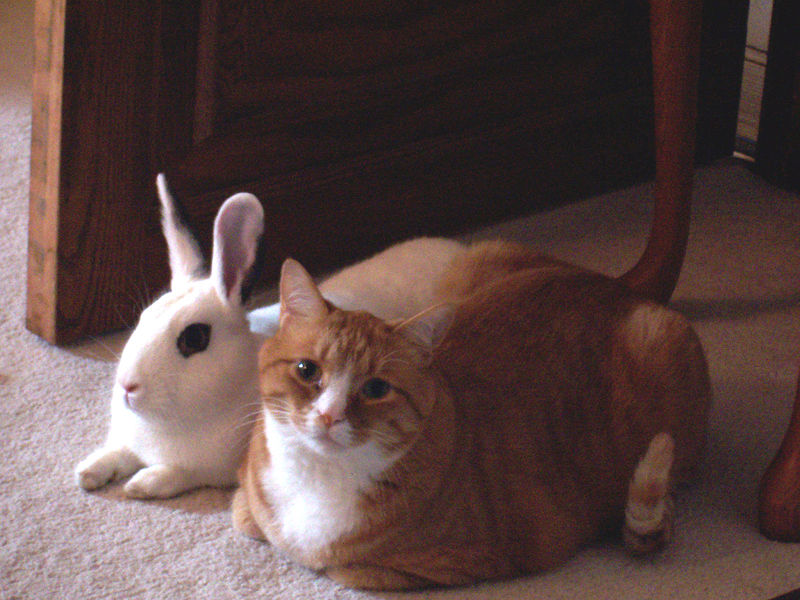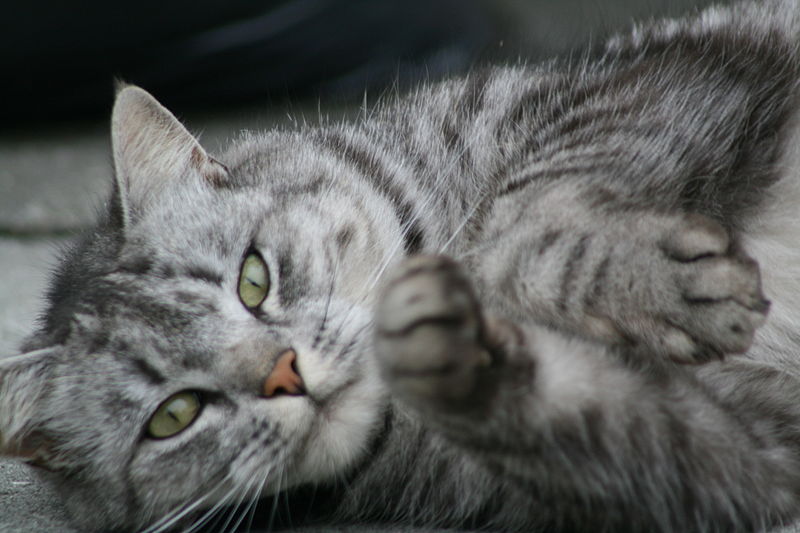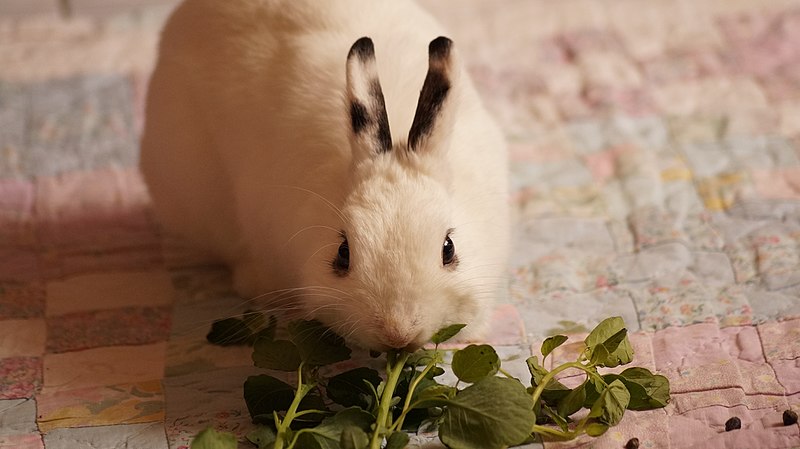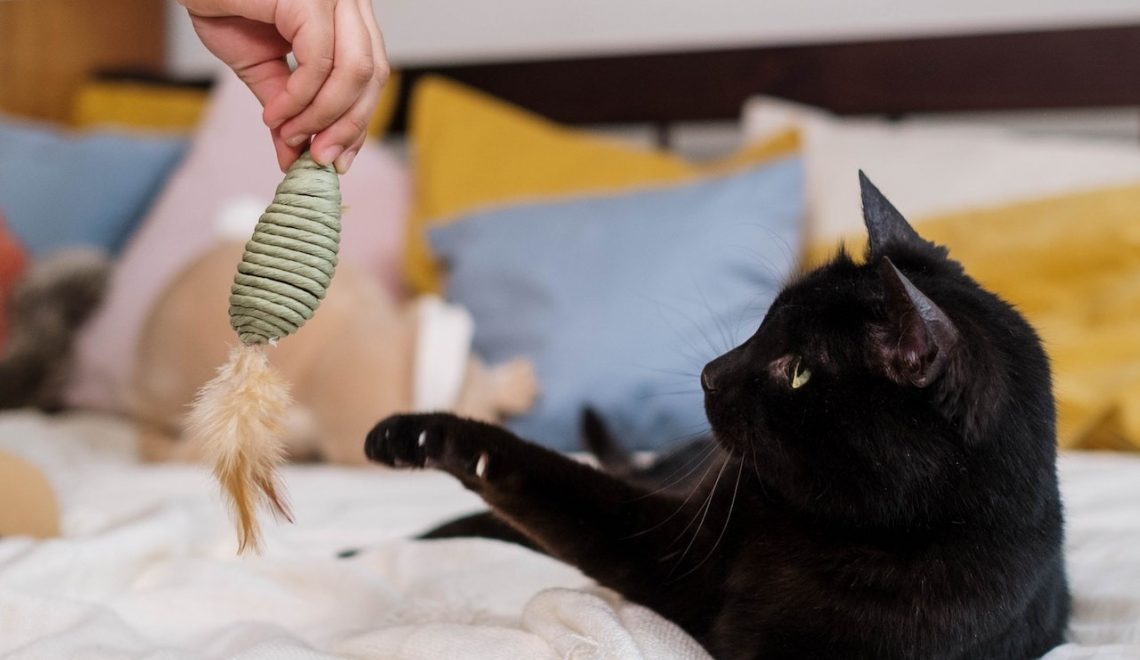Do Cats and Rabbits Get Along

Do rabbits like cats? Do cats and rabbits get along? Since one is the predator and the other the prey, cats and rabbits don’t seem like a desirable combo for a peaceful multi-pet household. Yet, cats and rabbits together find ways to tolerate each other and become friends.
Can cats and rabbits get along? With the appropriate approach, the right age of both pets, and matching personalities, these adorable furry companions can achieve living in harmony. Remember, though, that both rabbits and cats are territorial and need the right handling not to become jealous of each other.
Keep reading for some information on the cat-rabbit interaction and useful tips on helping your furry friends learn to accept their fellow playmate!

How do cats and rabbits live in the same home?
Despite the fact their biological predispositions make them rivals, domesticated rabbits and cats can be taught to live in the same house.
Nevertheless, some basic house rules are a must. Safety should be every pet parent’s priority, so to bond these furbabies, constant supervision is necessary.
If your cat comes to accept your bunny, this doesn’t automatically mean it won’t chase other rabbits. Similarly, if the cat acts calm and comfortable around your house rabbit most of the time, it’s still governed by its natural instinct, and a sudden twitch or movement can trigger the cat to attack. Even if it’s just being playful, a cat can considerably harm the rabbit, which is why safety precautions are a must.A rabbit should have its own separate place, a sturdy rabbit hutch or cage where it can feel detached from the cat if it gets anxious. Their interaction should be done in a room or space separate from their private nooks, as you don’t want any unnecessary friction over territory.

Does personality matter?
Sometimes bunnies and cats get along famously, but sometimes personality differences get in the way. Although it may seem that cats are the ones dictating the course for this relationship, a rabbit’s personality can also be a determining factor. Once it feels comfortable enough, a rabbit can be dominant, even aggressive, in some cases towards a cat. Consequently, if the cat is more docile and timid by nature, don’t get surprised if you notice your bun bossing around. Some rabbit breeds are more friendly around people and more accepting of other pets, like the Checkered Giant and California Giant rabbit breed.
What can you do to create harmony in your multi-pet home
Apart from their personality, the first time your two pets lay eyes on each other can determine their future relationship. This is where pet parents enter the picture. Take a look at these ideas on how to properly handle the pet meeting:
- Bring the cat to the rabbit, not vice-versa. The rabbit should be safe and enclosed in its hutch or a cage. The cage should be a familiar place, with the rabbit’s toys, bowls, hey, and bed to keep it calm and not feel threatened. Your pets should definitely not be sharing a litter box.
- If the cat gets agitated and aggressive, remove it from the room and try the interaction later. Patience is vital in this situation, as the animals will need some time to get used to each other’s smell and presence.
- Try out the scent recognition technique – take a clean cloth or a towel and rub the bunny’s back with it. Then use the same cloth and gently caress the cat, allowing it to sniff it and get interested. Repeat the process several times before actually introducing the pets.
- Determine the time your pets will bond – for example, devote an hour a day at the approximately same time to let your pets interact through the cage. This way, you’ll give them a chance to adapt and accept each other slowly.
- When the atmosphere is calm enough, start taking the bunny out of the cage. At this stage, it’s best to have one more person monitoring the cat while you handle the rabbit. Keep the rabbit in your hands and gradually bring it closer to the cat. If you notice the rabbit getting too stressed out and fidgety, put it back in the cage and try another time.
- When the animals are ready to interact peacefully, let them check out each other. The rabbit may even charge at the cat but in a playful manner. Don’t be surprised by this act; in fact, it can be useful for the cat to perceive the rabbit as a friend and not as prey. Keep a safe distance and let the animals be assertive. This is the first step towards proper bonding.
What if things don’t go well
Your job is not to let this happen. This is why a rabbit and a cat should never be kept loose without supervision. This is the same with any pets, whether it’s a cat or dog. What’s more, it’s essential to observe your pets and follow their stress and aggression levels. It’s really apparent when a cat is lurking and ready to attack. On the other hand, a rabbit will start shaking and nudging against the cage when threatened and scared. Watch your pet’s reactions and act accordingly, and that is the most effective way to protect them.
Keep in mind that after a few tries, it may turn out that your rabbit and the cat are just not the right match. In that case, don’t try to force the relationship and start thinking about different arrangements around the house. Keeping both of your fur babies happy, healthy, and safe is the top priority and much more important than their bonding.

Is your kitty feeling stressed about their new fur family member? Or, do you want to reward them for a bonding job well done? Treat them to a KitNipBox! Our boxes contain the best high-quality cat toys, all-natural treats, and other fun, healthy cat products. You can find out more about what’s inside here, or give a gift by clicking this link.









![Dj Scratch mixing some beats. 🎧 🎶 #Mewsic #KitNipBox
[via Instagram | @dharmacatnitiative]](https://www.kitnipbox.com/meow/wp-content/plugins/instagram-feed/img/placeholder.png)